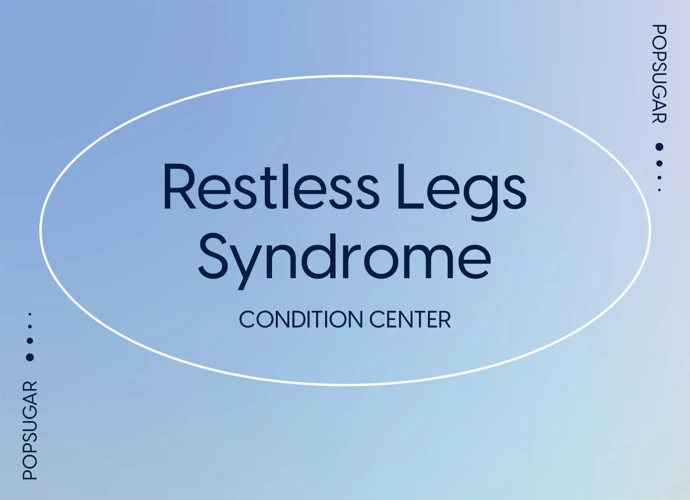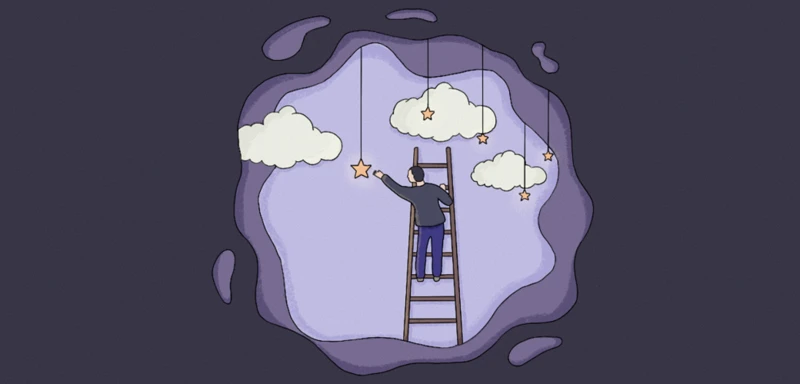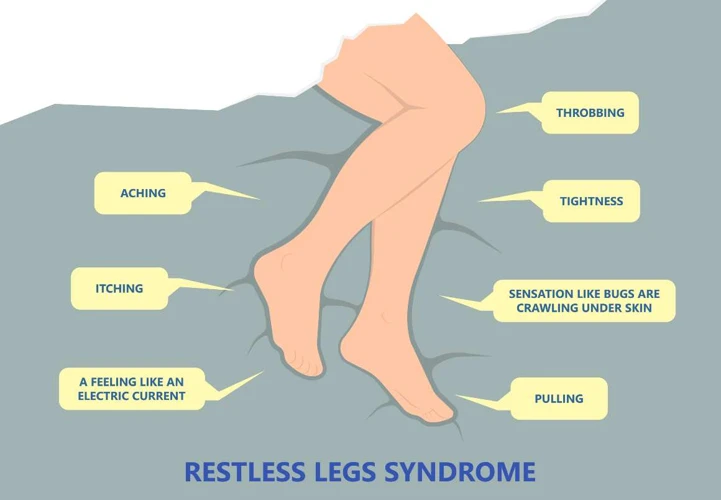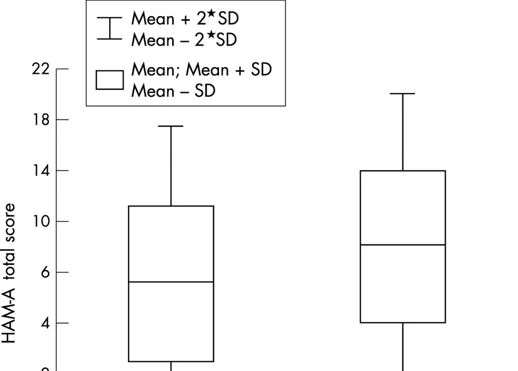Millions of people worldwide suffer from Restless Leg Syndrome (RLS), a neurological disorder characterized by an irresistible urge to move one’s legs, often accompanied by uncomfortable sensations. But did you know that there may be a relationship between RLS and anxiety? Anxiety, a common mental health disorder, can manifest in various ways and significantly impact a person’s daily life. In this article, we will delve into the complex connection between RLS and anxiety, exploring the latest research findings, shared risk factors, and the impact on sleep quality. Additionally, we will discuss effective ways to manage both Restless Leg Syndrome and anxiety, including treatments, therapy options, and lifestyle changes that can greatly improve sleep and reduce anxiety symptoms. So, let’s explore this intriguing relationship and discover how it affects those who experience these conditions.
What is Restless Leg Syndrome?

Restless Leg Syndrome (RLS) is a neurological disorder that primarily affects the legs, causing an uncomfortable sensation and an overwhelming urge to move them. This condition is also known as Willis-Ekbom disease and is often classified as a sleep disorder due to its most prominent symptoms occurring during periods of rest and inactivity. Individuals with RLS often describe the sensations as crawling, tingling, itching, or aching, which can create an uncontrollable need to constantly shift or walk. The severity of RLS can vary, with symptoms fluctuating from mild to severe, leading to significant sleep disturbances and daytime fatigue. While RLS can affect people of all ages, it is more commonly experienced by adults and tends to worsen with age. Research has also identified a higher prevalence of RLS in women and individuals with a family history of the disorder.
Understanding Anxiety

Anxiety is a complex and multifaceted mental health disorder that affects many individuals worldwide. It encompasses a range of symptoms and can manifest in various ways. Anxiety disorders are characterized by excessive and persistent worrying, fear, and nervousness that can significantly disrupt daily life. There are several types of anxiety disorders, including generalized anxiety disorder (GAD), panic disorder, social anxiety disorder, and specific phobias. Each type presents its own set of symptoms and triggers, but they all share a common thread of excessive and irrational fear or worry. Symptoms of anxiety can manifest emotionally, physically, and behaviorally, and may include feelings of restlessness, irritability, fatigue, muscle tension, difficulty concentrating, and sleep disturbances. The impact of anxiety on individuals’ lives can be profound, affecting relationships, work performance, and overall well-being. If left untreated, anxiety can lead to a reduced quality of life and potentially contribute to the development of other mental health conditions.
Types of Anxiety Disorders
There are several types of anxiety disorders which can have a profound impact on an individual’s mental and emotional well-being. These disorders are characterized by excessive and persistent worrying, fear, or apprehension that can interfere with daily life. Some common types of anxiety disorders include:
- Generalized Anxiety Disorder (GAD): People with GAD experience chronic and excessive worry about everyday situations and events. They often find it challenging to control their anxiety and may have physical symptoms such as restlessness, irritability, muscle tension, and difficulty concentrating.
- Panic Disorder: This disorder is characterized by recurrent and unexpected panic attacks, which are intense bouts of fear and discomfort. Panic attacks can be accompanied by physical symptoms like heart palpitations, shortness of breath, dizziness, and a sense of impending doom.
- Social Anxiety Disorder: Individuals with social anxiety disorder have an intense fear of being judged, humiliated, or embarrassed in social situations. This fear can lead to avoidance of social interactions, negatively impacting relationships and daily functioning.
- Specific Phobias: These phobias involve a persistent and irrational fear of a specific object, situation, or activity, such as fear of flying, heights, spiders, or enclosed spaces. People with specific phobias may go to great lengths to avoid their fears.
- Obsessive-Compulsive Disorder (OCD): OCD is characterized by recurrent intrusive thoughts or obsessions, which lead to repetitive behaviors or compulsions. Individuals with OCD often feel driven to perform these rituals to alleviate anxiety or prevent perceived harm.
It’s important to note that these are just a few examples of anxiety disorders, and each individual’s experience may vary. Understanding the specific type of anxiety disorder a person is dealing with is crucial in determining the most appropriate treatment strategies. If left untreated, anxiety disorders can significantly impact a person’s quality of life, leading to difficulties in relationships, work, and overall well-being. Seeking professional help is essential for proper diagnosis and management of anxiety disorders.
Symptoms of Anxiety
- Excessive Worry: Individuals with anxiety often experience persistent and excessive worry about various aspects of their lives, such as work, relationships, health, or everyday situations.
- Restlessness: Restlessness is a common symptom of anxiety and may involve feelings of agitation, inability to relax, or a constant need to be on the move.
- Irritability: Anxiety can lead to increased irritability, making individuals more sensitive and prone to frustration, even over minor issues.
- Trouble Concentrating: Difficulty concentrating and experiencing mental fog are common symptoms of anxiety. This can significantly impact productivity and overall cognitive function.
- Sleep Disturbances: Anxiety often disrupts sleep patterns, resulting in difficulties falling asleep, waking up frequently during the night, or having restless sleep. This can further contribute to sleep deprivation and exacerbate symptoms of both anxiety and Restless Leg Syndrome.
- Physical Symptoms: Anxiety can manifest in physical symptoms, including muscle tension, headaches, stomachaches, rapid heartbeat, shortness of breath, and dizziness.
- Panic Attacks: Some individuals with anxiety may experience panic attacks, which are intense periods of fear and discomfort accompanied by physical symptoms such as chest pain, trembling, sweating, and a sense of impending doom.
- Avoidance Behaviors: People with anxiety may engage in avoidance behaviors to try to alleviate their anxiety. This can involve avoiding certain situations, places, or activities that trigger anxiety or cause discomfort.
The Link between Restless Leg Syndrome and Anxiety

While the exact relationship between Restless Leg Syndrome (RLS) and anxiety is still being studied, there is evidence to suggest a significant connection between the two conditions. Studies have found that individuals with RLS are more likely to experience symptoms of anxiety, such as generalized anxiety disorder, panic disorder, and social anxiety disorder. The prevalence of anxiety disorders is higher in individuals with RLS compared to those without the condition. Additionally, research has shown that individuals who have both RLS and anxiety tend to have more severe RLS symptoms. It is believed that the shared risk factors between RLS and anxiety, such as genetic predisposition, abnormal dopamine function, and alterations in the central nervous system, may contribute to their co-occurrence. The impact on sleep quality caused by RLS can exacerbate anxiety symptoms, leading to a vicious cycle of sleep deprivation and heightened anxiety. Understanding the relationship between RLS and anxiety is vital for comprehensive treatment approaches that target both conditions simultaneously, improving the overall well-being of individuals affected by these disorders.
Studies and Research Findings
Studies and research findings have provided valuable insights into the relationship between Restless Leg Syndrome (RLS) and its connection to other conditions, such as anxiety. One study published in the Journal of Sleep Research found that individuals with RLS were more likely to experience symptoms of anxiety compared to those without RLS. The study revealed that the severity of RLS symptoms correlated with the severity of anxiety symptoms. Another study conducted at the Johns Hopkins University School of Medicine investigated the potential genetic link between RLS and anxiety disorders. The researchers identified a shared genetic risk factor between RLS and certain anxiety disorders, suggesting a possible biological connection. Additionally, research has shown that individuals with RLS often experience sleep deprivation, which itself can contribute to the development or worsening of anxiety symptoms. This link between RLS, anxiety, and /restless-leg-syndrome-sleep-deprivation/ underscores the importance of understanding and addressing both conditions simultaneously for effective management and improved quality of life. It is worth noting that while research has primarily focused on adults, future investigations may shed more light on the relationship between RLS and anxiety in /restless-leg-syndrome-children/.
Shared Risk Factors
Shared Risk Factors:
Restless Leg Syndrome (RLS) and anxiety share several common risk factors. One of the primary shared risk factors is a family history. Both conditions tend to run in families, suggesting a genetic component. Research has shown that individuals with a family history of RLS are more likely to develop the disorder. Similarly, family history plays a significant role in anxiety disorders, with genetic factors contributing to an increased susceptibility. Another shared risk factor is iron deficiency. Low levels of iron in the brain have been associated with both RLS and anxiety. Iron plays a crucial role in dopamine regulation, a neurotransmitter involved in the etiology of RLS and anxiety. Certain medical conditions such as Parkinson’s disease, diabetes, and kidney disease have been linked to an increased risk of developing both RLS and anxiety. The presence of such conditions can exacerbate the symptoms of these disorders. Additionally, pregnancy is another shared risk factor. RLS symptoms often appear or worsen during pregnancy, and pregnant women are also at a higher risk of experiencing anxiety. The hormonal changes and increased physical strain during pregnancy can contribute to the development or intensification of both conditions. Understanding these shared risk factors can help healthcare professionals in identifying and managing individuals who may be at a higher risk of experiencing both RLS and anxiety.
Impact on Sleep Quality
The impact of Restless Leg Syndrome (RLS) on sleep quality is undeniable. This condition can significantly disrupt a person’s ability to get a good night’s sleep and can cause various sleep-related issues. Here are some ways in which RLS affects sleep quality:
- Difficulty falling asleep: Individuals with RLS often experience difficulty in falling asleep due to the discomfort and urge to move their legs.
- Frequent awakenings: RLS can cause frequent awakenings throughout the night as the sensations in the legs become more pronounced, leading to a disruption in the sleep cycle.
- Reduced overall sleep duration: The constant need to move the legs and the discomfort associated with RLS can decrease the total amount of sleep obtained each night, resulting in sleep deprivation.
- Fragmented sleep: RLS can cause fragmented sleep, characterized by frequent interruptions and a lack of deep, restorative sleep.
- Daytime fatigue and sleepiness: Due to the sleep disturbances caused by RLS, individuals often experience daytime fatigue, excessive sleepiness, and a reduced ability to concentrate and perform daily tasks.
It’s important to note that the impact of RLS on sleep quality can create a vicious cycle. Sleep deprivation caused by RLS symptoms can worsen the severity of RLS itself, leading to a further decrease in sleep quality. Addressing and managing RLS symptoms is essential not only to alleviate the discomfort associated with the condition but also to improve overall sleep quality and daytime functioning.
Managing Restless Leg Syndrome and Anxiety
Managing both Restless Leg Syndrome (RLS) and anxiety requires a multi-faceted approach to address the specific symptoms and challenges associated with each condition. When it comes to treating RLS, options such as medications, lifestyle changes, and self-care techniques can be effective. Medications commonly prescribed for RLS include dopamine agonists, opioids, and anticonvulsants, which can help alleviate symptoms and improve sleep quality. However, it’s crucial to work closely with a healthcare professional to determine the most suitable medication and dosage for individual needs. In addition to medication, certain lifestyle changes, such as regular exercise, avoiding caffeine and nicotine, implementing a consistent sleep schedule, and practicing relaxation techniques, like yoga or meditation, can provide relief from RLS symptoms. When addressing anxiety, therapy options such as cognitive-behavioral therapy (CBT) or medication can be beneficial. CBT helps individuals identify and manage anxious thoughts and behaviors, providing effective coping strategies. Medications for anxiety, such as selective serotonin reuptake inhibitors (SSRIs) or benzodiazepines, may be prescribed in more severe cases. Additionally, making lifestyle changes like practicing stress-reducing activities, engaging in regular physical exercise, maintaining a balanced diet, and getting enough sleep can greatly contribute to managing anxiety symptoms. It’s important to consult with healthcare professionals and specialists who can tailor a treatment plan suited to an individual’s unique needs and monitor progress regularly.
Treatments for Restless Leg Syndrome
aim to alleviate the symptoms and improve sleep quality for individuals with RLS. The choice of treatment depends on the severity of the symptoms and the impact on daily life. Here are some common approaches and interventions used for managing RLS:
- Lifestyle modifications: Making certain lifestyle changes can help reduce RLS symptoms. These include maintaining a regular sleep schedule, engaging in regular moderate exercise, avoiding caffeine and alcohol, and practicing relaxation techniques such as yoga or meditation.
- Medications: There are several medications available to alleviate RLS symptoms. Dopamine agonists, such as pramipexole and ropinirole, are commonly prescribed to increase dopamine levels in the brain, which helps reduce the unpleasant sensations and urge to move the legs. Other medications, such as gabapentin and pregabalin, which are typically used to treat seizures and nerve pain, can also be effective in managing RLS symptoms.
- Iron supplements: In cases where iron deficiency is suspected to be a contributing factor to RLS, iron supplements may be recommended. Iron plays a crucial role in dopamine production and transport, and low levels of iron have been associated with the development and worsening of RLS symptoms.
- Alternative therapies: Some individuals find relief from RLS symptoms through alternative therapies, such as acupuncture, massage therapy, or chiropractic treatment. While the scientific evidence supporting these therapies is limited, they may be worth exploring under the guidance of a healthcare professional.
It is important to consult with a healthcare provider before starting any treatment for RLS. They can help determine the most suitable approach based on an individual’s specific symptoms, medical history, and personal preferences. Remember, the effectiveness of treatments may vary from person to person, and it may require some trial and error to find the most effective combination of interventions for managing RLS.
Therapy and Medication for Anxiety
Therapy and medication are two essential components in managing anxiety disorders. Therapy, such as cognitive-behavioral therapy (CBT), is commonly used to help individuals understand and modify their thoughts and behaviors that contribute to anxiety. CBT focuses on identifying and challenging negative thought patterns and developing effective coping mechanisms. Another widely used therapy is exposure therapy, which involves gradually exposing individuals to their anxiety triggers in a controlled and supportive environment, allowing them to build resilience and reduce their fear response over time. Additionally, medication can be prescribed by healthcare professionals to alleviate anxiety symptoms. This may include selective serotonin reuptake inhibitors (SSRIs), which help regulate serotonin levels in the brain, or benzodiazepines, which provide short-term relief by reducing anxiety and promoting relaxation. It is important to note that medication should always be prescribed and monitored by a qualified healthcare provider. Therapy and medication can often be combined to create a comprehensive treatment plan tailored to an individual’s specific needs and preferences.
Lifestyle Changes to Improve Sleep and Reduce Anxiety
Making certain lifestyle changes can greatly contribute to improving sleep quality and reducing anxiety levels in individuals with Restless Leg Syndrome (RLS). Here are some strategies that can be beneficial:
1. Establish a regular sleep routine: Stick to a consistent sleep schedule by going to bed and waking up at the same time every day, including weekends. This helps regulate your body’s internal clock and promotes better sleep.
2. Create a calming bedtime routine: Engage in relaxing activities before bedtime, such as reading a book, taking a warm bath, or practicing gentle stretching exercises. This helps signal to your body that it’s time to wind down and prepare for sleep.
3. Create a sleep-friendly environment: Make sure your bedroom is conducive to sleep by keeping it cool, dark, and quiet. Consider using earplugs, an eye mask, or a white noise machine to block out any disturbances that may disrupt your sleep.
4. Avoid stimulants: Limit or avoid the consumption of caffeine, nicotine, and alcohol, especially in the evening. These substances can interfere with sleep quality and exacerbate anxiety symptoms.
5. Engage in regular exercise: Physical activity can help reduce anxiety levels and improve sleep. Aim for at least 30 minutes of moderate-intensity exercise most days of the week, but try to avoid exercising too close to bedtime, as it may stimulate your body and make it harder to fall asleep.
6. Practice stress management techniques: Explore stress-reducing activities that work for you, such as mindfulness meditation, deep breathing exercises, or journaling. These techniques can help calm your mind and promote relaxation.
7. Limit exposure to electronic devices: The blue light emitted by electronic devices can interfere with your sleep. Try to avoid using smartphones, tablets, or computers at least an hour before bedtime.
By implementing these lifestyle changes, individuals with RLS can improve their sleep quality and reduce anxiety, leading to a better overall quality of life. Remember, it’s essential to consult with a healthcare professional for personalized advice and guidance tailored to your specific needs.
Conclusion
In conclusion, the relationship between Restless Leg Syndrome (RLS) and anxiety is a fascinating area of study. While the exact mechanisms linking the two conditions are not fully understood, research suggests that there is a correlation between RLS and an increased risk of developing anxiety disorders. Studies have shown that individuals with RLS are more likely to experience symptoms of anxiety and have a higher prevalence of anxiety disorders compared to those without RLS. The shared risk factors, such as genetic predisposition, dopamine dysfunction, and sleep disturbances, further contribute to the overlap between these two conditions.
Managing RLS and anxiety requires a multimodal approach. Treatment options for RLS include lifestyle modifications, such as regular exercise, avoiding triggers like caffeine and alcohol, and establishing a relaxing bedtime routine. Medications can also be prescribed to manage symptoms and improve sleep quality. For anxiety, therapy, such as cognitive-behavioral therapy (CBT), and medications, such as selective serotonin reuptake inhibitors (SSRIs), are common interventions. Additionally, adopting healthy sleep practices, including maintaining a consistent sleep schedule and creating a comfortable sleep environment, can greatly benefit both RLS and anxiety.
By addressing both conditions simultaneously, individuals can improve their overall well-being and quality of life. If you or someone you know is experiencing symptoms of RLS or anxiety, it is important to consult with a healthcare professional for an accurate diagnosis and personalized treatment plan. With the right support and management strategies, individuals can find relief from both Restless Leg Syndrome and anxiety, leading to better sleep and a reduction in anxiety symptoms. Remember, taking proactive steps towards managing these conditions is essential for optimal health and overall well-being.
Frequently Asked Questions
FAQs about Restless Leg Syndrome and Anxiety
1. Can Restless Leg Syndrome cause anxiety?
While there is no direct causality, people with Restless Leg Syndrome (RLS) often experience anxiety due to the discomfort and sleep disruptions caused by the condition.
2. Does anxiety make Restless Leg Syndrome worse?
Yes, anxiety can exacerbate symptoms of Restless Leg Syndrome, as stress and heightened emotions can increase muscle tension and discomfort.
3. Are there any natural remedies for Restless Leg Syndrome and anxiety?
Some individuals find relief through activities like exercise, stretching, yoga, meditation, and warm baths to help manage symptoms of both Restless Leg Syndrome and anxiety.
4. Can Restless Leg Syndrome be cured?
Currently, there is no known cure for Restless Leg Syndrome. However, there are various treatments available to help manage the symptoms.
5. Can anxiety medication worsen Restless Leg Syndrome?
While certain medications used to treat anxiety can worsen RLS symptoms, it is important to work closely with a healthcare provider to find the right medication or alternative therapy that minimizes any negative effects.
6. Does Restless Leg Syndrome occur in children?
Yes, Restless Leg Syndrome can occur in children, although it may be underdiagnosed due to difficulties in recognizing and describing the sensations they experience.
7. How does Restless Leg Syndrome impact sleep quality?
Restless Leg Syndrome can severely impact sleep quality, leading to difficulty falling asleep or staying asleep, resulting in persistent fatigue and insomnia.
8. Can anxiety improve if Restless Leg Syndrome is treated?
Improving the symptoms of Restless Leg Syndrome can potentially alleviate some anxiety since better sleep quality and reduced discomfort can positively impact overall mental well-being.
9. What are the common risk factors for both Restless Leg Syndrome and anxiety?
Shared risk factors include genetics, family history of either condition, hormonal imbalances, chronic diseases, and certain medications.
10. Is there an association between Restless Leg Syndrome, sleep deprivation, and anxiety?
Yes, Restless Leg Syndrome can contribute to sleep deprivation, which, in turn, can contribute to increased anxiety levels. The three conditions are interconnected and can significantly impact a person’s overall well-being.








